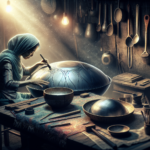In the vibrant tapestry of global festivals, Panifest stands out as a beacon of cultural heritage and artistic expression. This annual festival, celebrated with gusto, brings together diverse communities to honor their traditions, share their stories, and build a sense of unity through the arts.
Panifest, derived from ‘Pan African Festival’, originated as a means to celebrate and preserve African heritage. Over the years, it has grown beyond the continent, embracing cultures from around the world. This expansion has turned Panifest into a global phenomenon, a melting pot where history, art, and community converge.
The Origins of Panifest
Panifest has its roots in the Pan-African movement, which aimed to foster solidarity among all people of African descent. The festival was born out of a desire to reconnect with the cultural practices, languages, and histories that were often lost due to the scattering of African communities across the globe.
The first Panifest was held in the late 20th century and was seen as a revival of traditional African festivals combined with modern artistic expressions. The strong emphasis on heritage, combined with a modern approach to arts and culture, has defined Panifest’s unique identity.
Celebrating Heritage
Heritage is at the heart of Panifest. The festival provides an opportunity for people to rediscover and celebrate their roots. Traditional dances, music, rituals, and storytelling sessions are core components of the festival, each one a thread that weaves the rich cultural fabric of Panifest.
The visual arts also play a crucial role in celebrating heritage. Art exhibitions showcase works that reflect the historical experiences, spiritual beliefs, and everyday lives of various communities. These works often include sculptures, paintings, textiles, and craftworks, each piece telling a unique story.
The Diversity of Artistic Expression
Panifest is a canvas for a multitude of artistic expressions. Music, dance, theatre, literature, and visual arts are all proudly displayed throughout the duration of the festival. This diversity not only entertains but also educates attendees, offering insights into different cultural backgrounds and artistic traditions.
Music, for instance, ranges from traditional African drumming to contemporary genres like Afrobeats and hip-hop. Dance performances showcase both ancient rituals and modern choreography, demonstrating how tradition and innovation can coexist harmoniously.
Theatre and literature are also prominently featured at Panifest. Plays and readings often draw from historical texts as well as contemporary works, painting a broad picture of the cultural evolution. These performances and readings are not only artistic expressions but also educational experiences that bridge generational gaps.
Building Community and Unity
One of the most powerful aspects of Panifest is its ability to bring people together. The festival fosters a sense of community and unity among attendees, regardless of their backgrounds. Whether through collaborative art projects, communal meals, or participatory dance sessions, Panifest creates spaces where people can connect, share, and celebrate together.
Workshops and interactive sessions are integral parts of the festival. These activities encourage attendees to actively engage with the cultural and artistic offerings. For example, a traditional dance workshop not only teaches the steps but also delves into the dance’s historical and cultural significance.
Panifest also serves as a platform for dialogue. Panel discussions and lectures address critical issues such as cultural preservation, social justice, and the intersections of tradition and modernity. These conversations are crucial for fostering a deeper understanding and appreciation of diverse cultural practices.
A Global Phenomenon
While Panifest began with a focus on African heritage, it has evolved into a global celebration. Communities from across the world bring their own cultural expressions to the festival, making it a truly international event. This inclusivity not only broadens the scope of Panifest but also enriches it, creating a cultural mosaic that is both dynamic and harmonious.
International artists, performers, and scholars regularly participate in Panifest, contributing their unique perspectives and talents. This global participation underscores the festival’s mission of celebrating humanity’s shared heritage and artistic legacy.
The Future of Panifest
As Panifest continues to grow, its future looks bright. The festival is constantly evolving, incorporating new forms of artistic expression and reaching wider audiences. With the advent of digital technology, Panifest has also expanded into virtual spaces, allowing people from around the world to experience the festival online.
Sustainability is another key focus for the future of Panifest. Efforts are being made to ensure that the festival not only celebrates cultural heritage but also promotes environmental stewardship. This includes initiatives like using recyclable materials for art installations and adopting green practices for festival operations.
Conclusion
Panifest is more than just a festival; it is a celebration of cultural richness, artistic diversity, and communal unity. By honoring heritage and embracing artistic innovation, Panifest offers a space where histories can be remembered, stories can be shared, and new cultural narratives can be created. As it continues to grow and evolve, Panifest remains a testament to the enduring power of culture and the arts in bringing people together.
Frequently Asked Questions (FAQs)
1. What is Panifest?
Panifest, originally known as the Pan African Festival, is an annual festival that celebrates cultural heritage and artistic expression. It brings together communities from around the world to honor their traditions, share their stories, and foster a sense of unity through various art forms.
2. When and where is Panifest held?
The timing and location of Panifest can vary each year. It is typically held in different cities around the world, allowing for a diverse range of cultural settings. Information on the specific dates and location for the upcoming festival can be found on the official Panifest website or through related announcements.
3. What types of activities can one expect at Panifest?
Panifest features a wide array of activities including traditional dance and music performances, art exhibitions, theatre and literature readings, workshops, panel discussions, and communal events. These activities are designed to celebrate heritage, promote artistic diversity, and build community engagement.
4. Can anyone participate in Panifest?
Yes, Panifest is open to everyone. People of all ages, backgrounds, and cultures are welcome to participate in the festival. There are often interactive sessions and workshops where attendees can actively engage with the festival’s artistic and cultural offerings.
5. How can one stay updated on Panifest events?
To stay updated on Panifest events, you can visit the official Panifest website, subscribe to their newsletter, or follow them on social media platforms. These channels provide up-to-date information on festival dates, locations, activities, and other relevant announcements.





